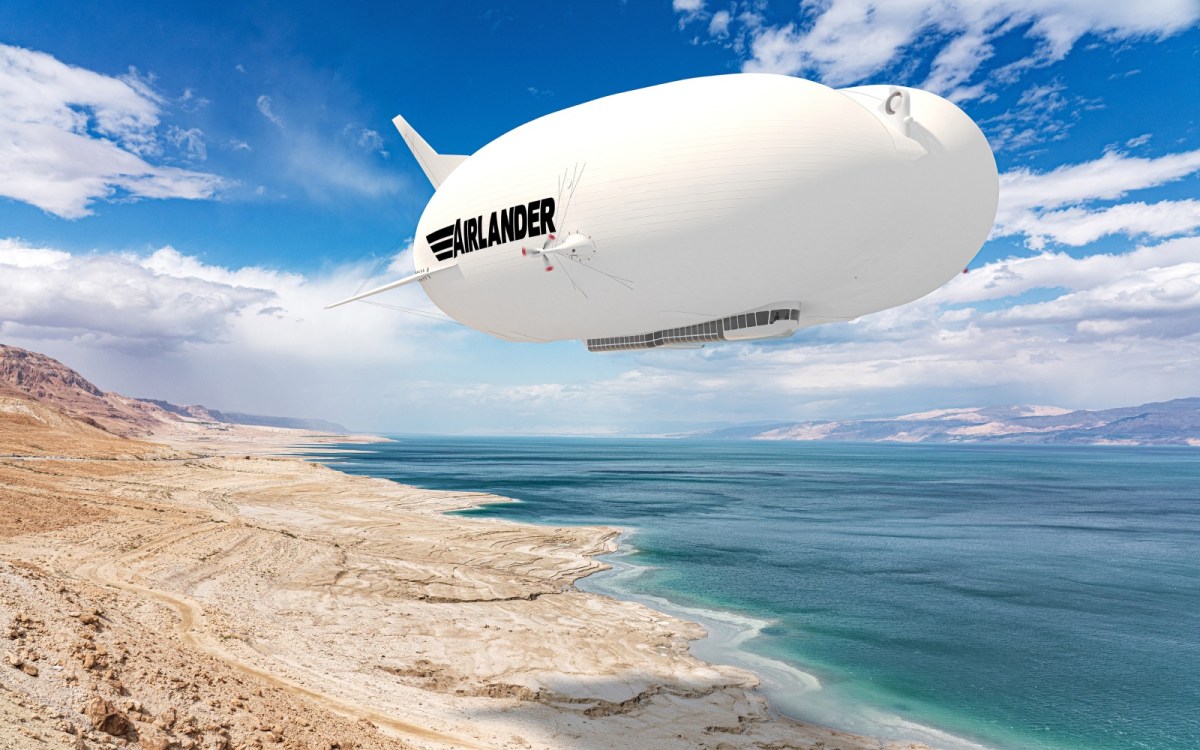The vision
“It was beautiful! And she was getting her work done. So — where had this obsession with speed come from, why had everyone caved to it so completely?
Because people did what everyone else did. Because first no one could fly, then everyone could fly, if they could afford it; and flying was sublime. But also now a crowded bus ride, a hassle.
And now, on most of the planes Mary flew on, people closed their window shutters and flew as if in a subway car, never looking down at all. Incurious about the planet floating ten kilometers below.”
— Kim Stanley Robinson’s Ministry for the Future, p. 419
The spotlight
Last month, we hosted our second Looking Forward book club gathering, exploring Kim Stanley Robinson’s Ministry for the Future. Stan himself joined us to talk about how he approached writing science fiction set just a few decades from today, and his decision to make that future a hopeful one. In smaller groups, we discussed our reactions to the ideas presented in the book, as well as our own climate work and ideas.
One theme we didn’t get to was Stan’s vision of the future of travel. Ministry for the Future includes some memorable travel scenes; Mary Murphy, the ministry’s leader and one of the book’s protagonists, journeys from Switzerland to California by clipper ship and high-speed rail, enjoying the scenery and serenity. Later, she joins a wildlife observation tour on a dirigible (a type of airship). The passengers watch caribou migrating over tundra stretching to the horizon; they land on a snowy meadow, inaccessible by road, in Yosemite National Park to observe a family of wolverines. As they fly, they see other airships: “Giant robot freighters, circular sky villages under rings of balloons, actual clippers of the clouds sporting sails or pulled by kites, hot-air balloons in their usual rainbow array.”
Those visions of a world where airships are the predominant mode of sky travel resonated with many readers — and the idea that, in a sustainable world, long-distance travel will become slower, rarer, and more intentional. But how close are we to a future where that is the norm? For this newsletter, we’re taking a look at the future of air travel, and those who have chosen to forgo it in the present.
![]()
Air travel accounts for about 2.5 percent of global greenhouse gas emissions — a number that’s only as small as it is because most of the world’s citizens can’t afford to fly at all. Taking a single transatlantic flight generates more CO₂ emissions than the average citizen of many Global South countries generates in an entire year.
“We have a narrative in the aviation industry that decarbonizing is hard and it’s going to take time,” says Tom Grundy, the CEO of Hybrid Air Vehicles (HAV), a company developing aircraft that resemble the airships imagined in Ministry for the Future. While that may be true for long-range, fast transport like a transatlantic flight, Grundy believes we can see progress much sooner by thinking about different types of technologies that can provide shorter or less time-sensitive transport.
Airships — steerable aircraft propelled by motors and kept aloft by lighter-than-air gas, like helium — aren’t a new idea. They’ve captured imaginations before, been hailed as the next great thing, and ultimately found niche uses in research, advertising, and surveillance. But Grundy and others see new potential in their use as a tool to accelerate the transition to greener transport.

HAV’s Airlander 10 ship in flight. Courtesy of HAV
HAV is working on one option. Its current design, Airlander 10, is not a true airship — it’s a partially buoyant hybrid. “We take just enough of the airship technology to get a bit of a head start against gravity,” says Grundy, “but not quite enough to float.” It uses four combustion engines for propulsion, but still boasts a 75 percent reduction in emissions over a similarly sized plane, thanks to the lift provided by its balloon full of helium. And, Grundy says, it can take off and land just about anywhere — even on water — eliminating the need for airport infrastructure.
The company’s first customer, the Spanish regional airline Air Nostrum, ordered 10 Airlanders last summer. They’re due to be delivered in 2026.
“Regional aircraft operators are looking for ways to change their fleets,” Grundy says. He envisions airships as a tool to make point-to-point air travel accessible to those currently priced out, or in underserved areas. And, eventually, it will be done with no fossil fuels. The company is working on converting to electric motors, and hopes to be able to offer zero-emissions flight options by 2030.
![]()
One additional challenge to making airships fully green is the helium, a non-renewable resource found in the Earth’s crust, which can’t be extracted without drilling. Most of the supply today is obtained as a byproduct of natural gas production — although, as Grundy points out, it’s not intrinsically linked to the production or use of natural gas. He also points out that airships don’t actually burn helium. Once they’re filled, they’re filled, apart from replenishing any gas that may leak out.
John-Paul Clarke, a professor of aerospace engineering and engineering mechanics at the University of Texas at Austin, is focused on the potential of a different gas: hydrogen. He is a cofounder of Universal Hydrogen, a company developing hydrogen fuel cells for aircraft.
As a lifting gas, hydrogen is lighter than helium, offering greater buoyancy, and it can be produced cleanly through electrolysis. Although, helium does have the advantage of being nonflammable — and both Clarke and Grundy note that this is usually when people bring up the Hindenburg, a hydrogen airship that burst into flames in 1937, killing 36 people. But we understand much more today about how to work with the world’s most abundant element. “Hydrogen has been used quite successfully in cars and proven very safe,” says Clarke.
Still, he’s dubious that airships will put much of a dent in passenger flights. “The problem is the speed — airships are slow,” he says. The hybrid Airlander 10 can cruise at about 85 mph, roughly 70 percent of the speed of most Amtrak trains in the Northeast Corridor of the U.S.
Clarke believes that the greatest potential for airships lies in cargo operations. This is an area of exploration for HAV as well. It’s working on its next design, the Airlander 50, which would be able to carry 50 tons with a hold big enough to fit six shipping containers.
“Airships will be very useful in moving cargo at a speed that is faster than a ship,” says Clarke, providing an opportunity to displace yet another carbon-spewing industry. They will always be slower than planes, but most cargo doesn’t really need to move in a matter of hours. “Finding that sweet spot is really where I think airships will play a role,” Clarke says.
![]()
For some travelers, the leisurely pace of airships could be a perk — a stark contrast to the generally crappy experience of flying on a plane. With the pandemic restrictions of the past few years, many frequent flyers were forced to slow down, simplify plans, or embrace more staycations. That renewed interest in the slow travel movement — an approach that favors taking one’s time, soaking in both the journey and the destination, rather than attempting to cross a bunch of big-ticket items off a bucket list.

A rendering of one possible configuration of the Airliner 10’s interior, with comfortable clusters of lounge chairs to seat 72 passengers. Courtesy of HAV
“Slow travel is so delightful, if you’ve got the time and money for it,” says Rachael Vaughan, a licenced psychotherapist and associate professor at California Institute of Integral Studies. Vaughan is a member of NoFlyClimateSci, an online database started in 2017 by climate scientist (and Grist 50 honoree) Peter Kalmus, to publicly share the stories of academics and others who have chosen to fly less.
“For me, I’m trying not to fly more than necessary,” says Vaughan. The last time she traveled to Europe to see family, she was able to stay for three months, and used only trains, ferries, and buses to get around. She enjoyed finding herself in new places with opportunities to get to know fellow passengers. “In Europe, it’s fantastic. You can go pretty much everywhere like that,” she says — even though in some instances, those options were more expensive than flights.
The future of travel could look like a mix of expanded ground transport, clean-fuel planes, new (or retro) tech like airships, and a culture of more intentional movement. For now, being one of the early adopters of that vision does require sacrifice. Vaughan believes her career will be impacted as she declines conference invitations — but for her, it’s worth it to live in a way that reflects her values and her views on global climate justice.
She has also found genuine pleasure in her rare travels, and a kind of satisfaction in requiring herself to think twice about spending carbon on trips. “If something’s special,” she says, “then you really wring every ounce of joy out of it.”
— Claire Elise Thompson
Did you subscribe to our daily Newsletter?
It’s Free! Click here to Subscribe
Source: Gist

















